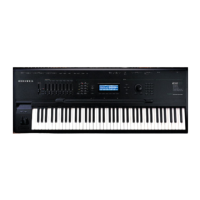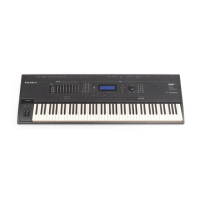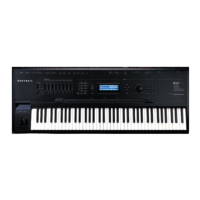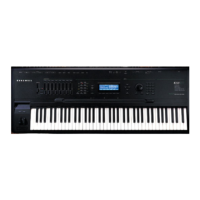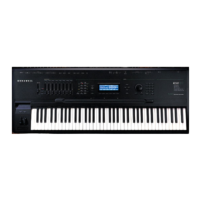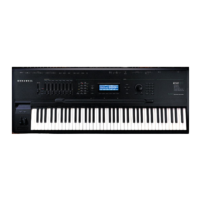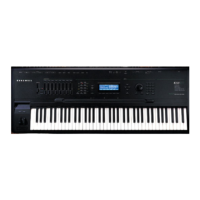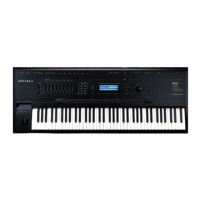DSP Functions
Non-linear Functions
14-43
SHAPER
The effect of SHAPER can be very unpredictable, and the mechanics of its operation lend
themselves toward explanations that are more numerical than verbal. The best way for you to
get a feel for the SHAPER is to start with single-cycle waveform keymaps and experiment with
different values for the parameters on its control input page (labeled AMT, for Amount), and
listen to the results. SHAPER tends to work best with the single-cycle waveform sounds
(keymaps with IDs 112—166), and is usually less effective with acoustic instrumental sounds.
SHAPER often produces numerous peaks throughout the frequency range, even at frequencies
that didn’t have much amplitude to begin with. These peaks can sound like resonant filters,
and can even sound voice-like.
The two series of graphs that follow show the effect of SHAPER on two typical single-cycle
waveforms. The first set of six graphs just below shows the evolution of a sine wave input as
the value of the Amount parameter is increased. The following set of six graphs shows the
effect when the Adjust parameter is increased. Each graph plots a 500-millisecond segment of
waveforms cycling at frequencies of 2 Hz. Of course, these are just a few of the countless
modulations you can apply to different waveforms at different frequencies.
-1
-0.8
-0.6
-0.4
-0.2
0
0.2
0.4
0.6
0.8
1
0 50 100 150 200 250 300 350 400 450 500
Amount = .1
-1
-0.8
-0.6
-0.4
-0.2
0
0.2
0.4
0.6
0.8
1
0 50 100 150 200 250 300 350 400 450 500
-1
-0.8
-0.6
-0.4
-0.2
0
0.2
0.4
0.6
0.8
1
0 50 100 150 200 250 300 350 400 450 500
Amount = .2 Amount = .375
-1
-0.8
-0.6
-0.4
-0.2
0
0.2
0.4
0.6
0.8
1
0 50 100 150 200 250 300 350 400 450 500
Amount = .625
-1
-0.8
-0.6
-0.4
-0.2
0
0.2
0.4
0.6
0.8
1
0 50 100 150 200 250 300 350 400 450 500
-1
-0.8
-0.6
-0.4
-0.2
0
0.2
0.4
0.6
0.8
1
0 50 100 150 200 250 300 350 400 450 500
Amount = .1 Amount = 4

